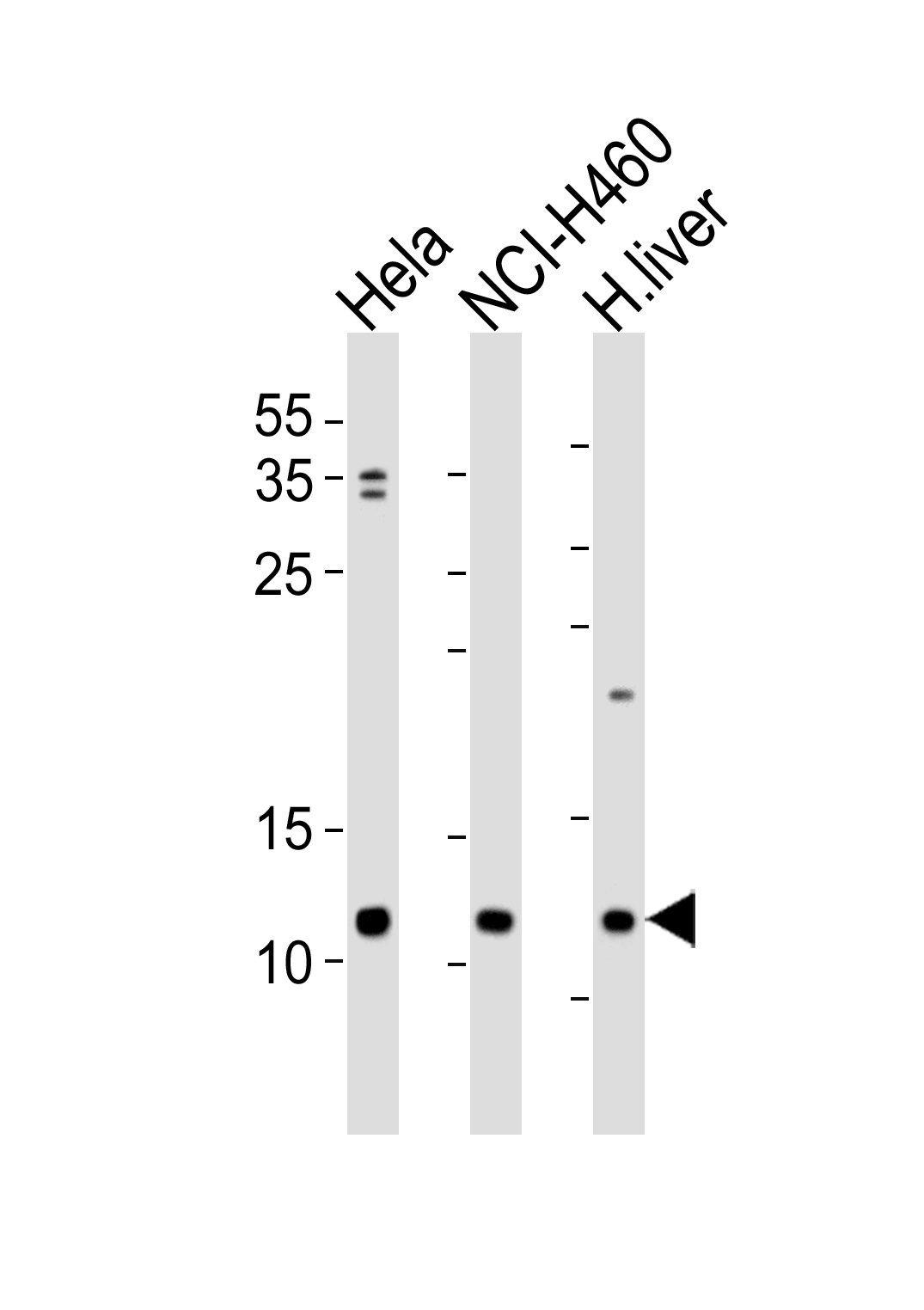产品名称
UQCRQ Rabbit Polyclonal Antibody (N-term)
别名
Cytochrome b-c1 complex subunit 8, Complex III subunit 8, Complex III subunit VIII, Ubiquinol-cytochrome c reductase complex 95 kDa protein, Ubiquinol-cytochrome c reductase complex ubiquinone-binding protein QP-C, UQCRQ
存储缓冲液
Purified polyclonal antibody supplied in PBS with 0.09% (W/V) New type preservative N. This antibody is purified through a protein A column, followed by peptide affinity purification.
Human Swissprot No.
O14949
特异性
This UQCRQ antibody is generated from a rabbit immunized with a KLH conjugated synthetic peptide between 13-41amino acids from the N-terminal region of human UQCRQ.
运输及保存条件
Maintain refrigerated at 2-8°C for up to 2 weeks. For long term storage store at -20°C in small aliquots to prevent freeze-thaw cycles.
背景介绍
This is a component of the ubiquinol-cytochrome c reductase complex (complex III or cytochrome b-c1 complex), which is part of the mitochondrial respiratory chain. This subunit, together with cytochrome b, binds to ubiquinone.
细胞定位
Mitochondrion inner membrane {ECO:0000250|UniProtKB:P08525}; Single-pass membrane protein {ECO:0000250|UniProtKB:P08525}
功能
Component of the ubiquinol-cytochrome c oxidoreductase, a multisubunit transmembrane complex that is part of the mitochondrial electron transport chain which drives oxidative phosphorylation. The respiratory chain contains 3 multisubunit complexes succinate dehydrogenase (complex II, CII), ubiquinol-cytochrome c oxidoreductase (cytochrome b-c1 complex, complex III, CIII) and cytochrome c oxidase (complex IV, CIV), that cooperate to transfer electrons derived from NADH and succinate to molecular oxygen, creating an electrochemical gradient over the inner membrane that drives transmembrane transport and the ATP synthase. The cytochrome b-c1 complex catalyzes electron transfer from ubiquinol to cytochrome c, linking this redox reaction to translocation of protons across the mitochondrial inner membrane, with protons being carried across the membrane as hydrogens on the quinol. In the process called Q cycle, 2 protons are consumed from the matrix, 4 protons are released into the intermembrane space and 2 electrons are passed to cytochrome c.

